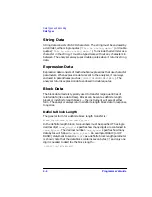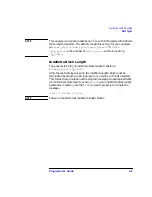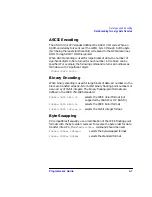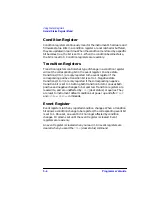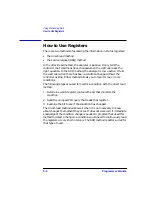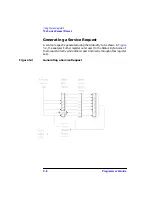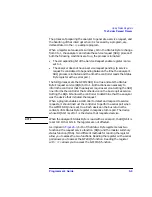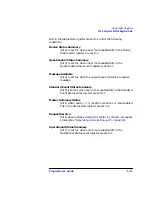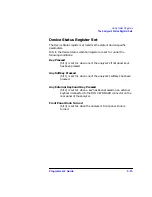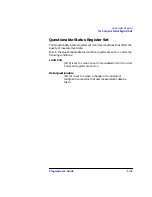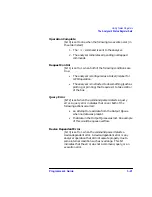
5-6
Programmer’s Guide
Using Status Registers
How to Use Registers
How to Use Registers
There are two methods of accessing the information in status registers:
• the direct-read method
• the service request (SRQ) method
In the direct-read method, the analyzer is passive. It only tells the
controller that conditions have changed when the controller asks the
right question. In the SRQ method, the analyzer is more active. It tells
the controller when there has been a condition change without the
controller asking. Either method allows you to monitor one or more
conditions.
The following steps are used to monitor a condition with the direct read
method:
1. Determine which register contains the bit that monitors the
condition.
2. Send the unique GPIB query that reads that register.
3. Examine the bit to see if the condition has changed.
The direct-read method works well when it is not necessary to know
about changes the moment they occur. It does not work well if immediate
knowledge of the condition change is needed. A program that used this
method to detect a change in a condition would need to continuously read
the registers at very short intervals. The SRQ method is better suited for
that type of need.
Summary of Contents for 8712ES
Page 11: ...1 1 1 Introduction to GPIB Programming ...
Page 27: ...2 1 2 Synchronizing the Analyzer and a Controller ...
Page 36: ...3 1 3 Passing Control ...
Page 39: ...4 1 4 Data Types and Encoding ...
Page 46: ...5 1 5 Using Status Registers ...
Page 71: ...6 1 6 Trace Data Transfers ...
Page 98: ...6 28 Programmer sGuide Trace Data Transfers Internal Measurement Arrays ...
Page 99: ...7 1 7 Using Graphics ...
Page 105: ...8 1 8 Front Panel Keycodes ...
Page 111: ...9 1 9 Introduction to SCPI ...
Page 129: ...10 1 10 Menu Map with SCPI Commands ...
Page 268: ...12 1 12 SCPI Conformance Information ...
Page 290: ...13 1 13 SCPI Error Messages ...






